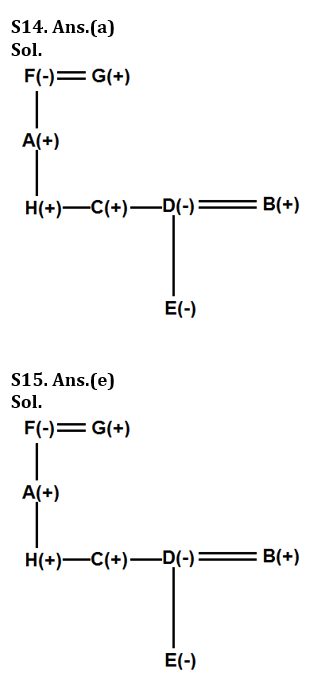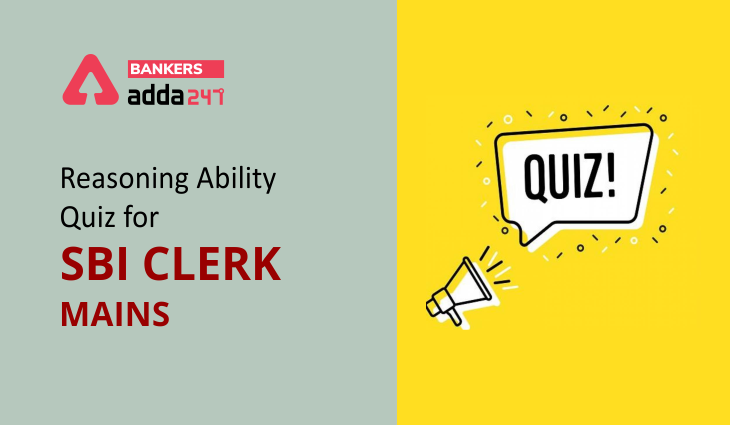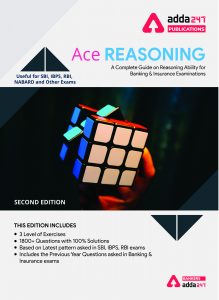Directions (1-5): Study the information carefully and answer the questions given below.
Ten people are seating in two parallel rows. P, Q, R, S and T are seating in row 1 and facing towards south. A, B, C, D and E are seating in row 2 and facing north. They like different Cars- Wagon-R, Alto, Ciaz, Swift and Ritz. Two persons like same cars such that one of them is in row 1 and the other is in row 2(i.e. both the persons who like Wagon R colour sit in different rows)
R does not like Ritz and wagon R. S faces the one who likes Alto. The one who likes Swift sits immediate left to R. P does not like Ciaz. C faces the one who sits immediate right of R. The number of persons sitting to the left of C is same as the number of persons sitting to the right of T. D faces the one who likes swift. The one who likes wagon R in row 1 faces the one who sits 2nd to the left of the one who likes wagon R in row 2. Only one person sit between S and the one who likes Ritz. The one who likes Ciaz sits 3rd to the left of the one who likes wagon R in row 2. More than two person sits between D and A. E does not like wagon R. C likes swift. P sits right to T but not immediate right.
Q1. Who among the following pair like Wagon-R?
(a) P, B
(b) Q, A
(c) R, B
(d) S, B
(e) none of these
Q2. How many persons sit between E and A?
(a) Two
(b) One
(c) Three
(d) Four
(e) None
Q3. Which of the following statement is true regarding S?
(a) E faces S
(b) A likes same car as S
(c) D faces S
(d) B sits 3rd left to the one who faces S
(e) None of these
Q4. Which of the following cars is liked by R?
(a) Alto
(b) Ciaz
(c) Ritz
(d) Swift
(e) None of these
Q5. Four of the following belongs to a group based on their seating arrangement find the one that does not belong to that group?
(a) T
(b) C
(c) R
(d) B
(e) A
Directions (6-8): Study the following information and answer the questions given below:
Each of the six friends A, B, C, D, F, and E get different salaries. The one who gets highest salary, gets 34k. E gets 15k. A gets more than only two persons. F gets less than D. C’s salary is the difference of B’s and D’s salary. E gets more than A but less than D. D’s salary is double than F’s salary. F doesn’t get 17k. The one who gets 2nd highest salary, gets 24k.
Q6. How many persons get less salary than D?
(a) five
(b) two
(c) three
(d) four
(e) None of these
Q7. What is the salary of B?
(a) 12k
(b) 24k
(c) 34k
(d) 10k
(e) None of these
Q8. Who among the following gets 12k?
(a) B
(b) D
(c) F
(d) C
(e) None of these
Directions (9-11): In the following questions, the symbols @, $, *, # and δ used with the following meaning as illustrated below:
‘P $ Q’ means ‘P is not smaller than Q’
‘P@Q’ means ‘P is neither smaller than nor equal to Q’
‘P # Q’ means ‘P is neither greater than nor equal to Q’
‘P δ Q means “P is neither greater than nor smaller than Q’
‘P *Q’ means ‘P is not greater than Q’
Now, in each of the following questions assuming the given statements to be true, find which of the four conclusions I, II, III and IV given below them is/are definitely true and give your answer accordingly.
Q9. Statements:
J* O, P δ D, Y # J, D $ Y
Conclusions:
I. O @ Y
II. J@ P
III. Y δ P
IV. Y # P
(a) Only I is true
(b) Only III is true
(c) Only IV is true
(d) Only either III or IV is true
(e) Only either III or IV and I are true
Q10. Statements:
O @ M, T * F, L # O, F $ L
Conclusions:
I. M # L
II. F @ O
III. T # O
IV. F@ M
(a) None is true
(b) Only I is true
(c) Only II is true
(d) Only III is true
(e) Only IV is true
Q11. Statements:
V # H, G * X, H δ G, J @ V
Conclusions:
I. X $ H
II. G @ V
III. J @ X
IV. V # X
(a) Only I, II and III are true
(b) Only I, II and IV are true
(c) Only II, III and IV are true
(d) Only I, III and IV are true
(e) All I, II, III and IV are true
Directions (12-13): In each question below is given a statement followed by two assumptions numbered I and II. An assumption is something supposed or taken for granted. You have to consider the statement and the following assumptions and decide which of the assumptions is implicit in the statement.
Give answer
(a) If only assumption I is implicit
(b) If only assumption II is implicit
(c) If either I or II is implicit
(d) If neither I nor II is implicit
(e) If both I and II are implicit
Q12. Statements: “Instead of burning the leaves, bury them in compost pits, by which it gets converted to natural manure, making it beneficial for the soil.” – A notice issued in public interest by Department of Environment
Assumptions:
I. Whenever leaves are burnt in the open, the air gets laden with tiny particulate matter which raises air pollution to alarming levels, which cause severe respiratory disorders and eye infections to those exposed to it.
II. Benefits gained from ashes of leaves burnt are not as much as the benefits gained from the natural manure obtained from leaves by bury it.
Q13. Statements: “A tempting cup of garma Georgia now awaits you at every street corner. So, no matter who you are or where you go, a Georgia Vending Machine will hand you the same clean, delicious cup of tea in Regular, Adrak, Elaichi and Masala and if you’re looking for a change try the Regular, Mocha and Cappuccino coffee. One sip will make you realize why every other alternative is a mere compromise!” ____ An advertisement
Assumptions:
I. Most of the people need delicious cup of tea or coffee with a change in taste.
II. Every person is addicted to either tea or coffee.
Directions (14-15): Read the following information carefully and answer the following questions.
There are eight members A, B, C, D, E, F, G and H of the same family. F, D and E are the only females’ members. D, who is married to B, is the second youngest member. Both H and C, are E’s maternal uncle. A, who is the only child of G, has three kids. All the females belong to a different generation. F has only one child.
Q14. How is A related to E, if it is given that E is the only unmarried female and F is the oldest member in the family?
(a) Maternal Grandfather
(b) Sister
(c) Mother
(d) Grandmother
(e) None of these
Q15. How many persons are older than A’s son in law, if it is given that E is the only unmarried female and F is the oldest member in the family?
(a) Three
(b) Two
(c) One
(d) More than three
(e) Cannot be determined
Solutions



Click Here to Register for Bank Exams 2021 Preparation Material





 General Awareness Quiz for Bank Mains Ex...
General Awareness Quiz for Bank Mains Ex...
 English Language Quiz For Bank Foundatio...
English Language Quiz For Bank Foundatio...
 Reasoning Quiz For Bank Foundation 2024 ...
Reasoning Quiz For Bank Foundation 2024 ...


